TONIGHT! Jacques Tati’s Playtime & Scott MacDonald program 1
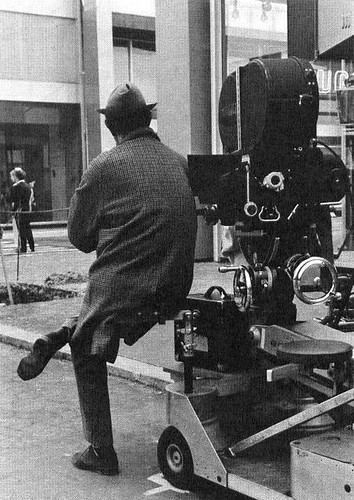
Jacques Tati shooting Playtime (1967)
As an exclusive service to OPEN SPACE readers, I’m adapting the approach of my Film on Film Foundation blog, “Highly Recommended!” of last year, in which I attempted to dispense opinions and advice re. every (to my mind) worthwhile show in the Bay Area repertory film scene (you can see why it only lasted seven months!) as a semi-regular feature in these pages for the duration. So that I may retain a hold on my demi-sanity, I’ll be limiting myself to writing about 2-3 shows per week, on a totally arbitrary basis… To give an idea of the tone of 2009’s 33 columns, Now It Can Be Told! – My original title was actually “HIGHLY RECOMMENDED!”, which my bully of an editor refused to countenance… (In point of fact, he did a reasonably good job, enough so that I grew to appreciate the affection in his diminutive nick-name for the column, Recs). Have no fears, tho—I’ll tone things down for OPEN SPACE. Without further ado:
Today, Thursday, February, 11th
presents us with yet another Yerba Buena Center for the Arts/SFMOMA death-match with the two programs mentioned in this blog’s title. I’ve no idea why this is allowed to happen – don’t you programmers talk to each other? (I mean, when are you gonna get together in those back rooms, and smoke your cigars, and make all those deals?) Last time this happened, SFMOMA’s Kenneth Anger show (with Kenneth bleepin’ Anger in person!) happened at the very same time as Yerba Buena’s super-rare Curt McDowell show. Lovers of kinkily homoerotic experimental cinema must have felt as if stretched on a rack (maybe they enjoyed this, now that I think about it…)… At any rate, out of chivalry, I’ll be dealing with the Yerba Buena program first…

Yerba Buena: Playtime @ 7:30 p.m.
I read about this film for many years in Jonathan Rosenbaum’s obsessive articles before I was able to finally see it at the PFA a dozen or so years ago. Quite prepped, you couldn’t have found a happier camper than yours truly as the reels unspooled. I could easily relate to Tati’s Modernist love/hate obsession with Modernism (tho my own neurotic fixation veers to the post-Mod… Modernism – the world into which I was born and by which I was imprinted—I just love.). The only way Tati could deal with the unfortunately evolving Paris of the late 60’s was to create his own version in an open-air studio in which he could manufacture and control gorgeously stylized takes on the ever-encroaching skyscrapers driving him crazy:
Photographed in 70mm at a vast expense, Tati’s gargantuan vision, which (if I remember correctly), Rosenbaum lauds for its strides towards a Bazin-ian, democratic experience by its viewers, can be a bit overwhelming. The only time I’ve been able to see it in 70, I found this “comedy” harsh, almost totalitarian,
even sick-making…
Some relief is provided by an on-going gag, which has tourist posters for various locations dominated by semi-uniform semi-skyscrapers:
This image is a perennial favorite – Tati’s M. Hulot as Odysseus cast adrift in a bewildering maze of islands, or Theseus in search of Ariadne…
A hilarious take on computers…
So this is
….?!!
I often think of this scene when walking the streets at night, and see back-to-back (or, as in this case, front-to-front) households tuned in to the global village idiot…
Despite what I’ve said about its effect in 70, in 35mm, as it will be presented at Yerba, it has always struck me as quite human in scale, not to mention ravishingly engaging and pulchritudinous…
Oh, yeah, getting back to my first screening at the PFA – As this extended, climactic sequence progressed, and the restaurant Royale, which is still in the process of being built as its debut evening commences, is swamped by a diverse, thrill-seeking crowd, and literally falls apart, catching on fire, as indicated by a loud alarm —-
The lights went up, and the screen went blank. In fact, the film’s restaurant wasn’t really about to be engulfed by flames—it was an actual fire alarm (for reals) set off within the PFA/Berkeley Art Museum building… We got up, filed out, and walked out to the street as the fire trucks arrived. Appropriately dressed fellows rushed into the building and found nothing of concern, but the gates were locked pending further investigation, and my true consummation of Playtime would have to wait ’til another evening (which did not occur for quite some time, and at another venue)(aesthetic detournment trumped for a time by reality’s — Yes, Guy Debord was a big fan of this film)…
I can’t presently conclude with anything better re. this film than my Recs comments from last July, so I shan’t even try: “Playtime is a glorious uniting of opposites: massive and intimate; closely observed and multiplane; sweet n’ tender and chillingly satirical; a view of the modern simultaneously representing both perspectives of Robert Mitchum’s Night of the Hunter LOVE/HATE-bestrewn fists. Tati’s film is a cosmic vision with Paris at the center of a swirling spiral galaxy”…
On the other hand, at SFMOMA:
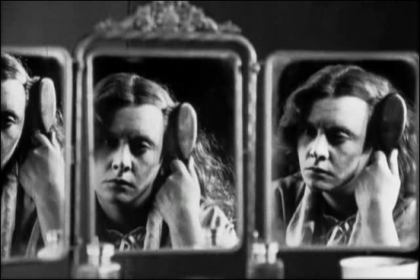
The Smiling Madame Beudet, Germaine Dulac (1922)
The Europeans: Creating a Context @ 7:00 p.m. is the first show of 75 Years in the Dark: A Partial History of Film at SFMOMA, and the first of three curated by Scott MacDonald, one of the few titans among what could be classified as “avant-garde moving image historians” currently working. MacDonald, famous for his A Critical Cinema series of interview books with experimental “makers”, also recently wrote THE BOOK on SFMOMA’s own major contribution to the development of film art in the form of Frank Stauffacher’s Art in Cinema program (which, believe it or not, is more or less responsible for the ENTIRE visual/moving image world we live in today—more on this later—Yes, I’ll undertake to prove that not Paris, but in fact SFMOMA is the true Center of the Universe, and no, I’m not being paid to say this, the reality is I’ll probably get in trouble for revealing the TRUTH, but it shall be told….)
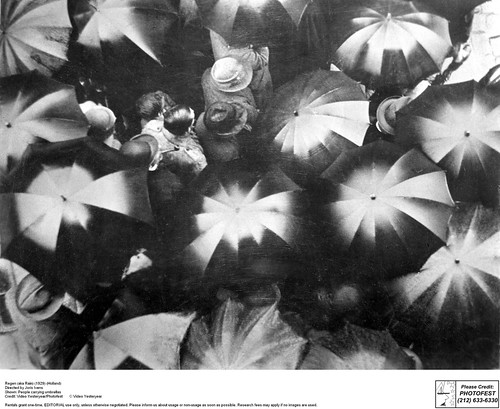
Rain, Joris Ivens (1929)
So now that I’ve got your attention, who needs Playtime? (Besides, I just saw it again a couple of weeks ago at the PFA, where the woman sitting next to me kept nodding off half the time.) This show is where it’s really at in the Bay Area 2/11/02—the beginning of countless revelations to unfold over the next year. Those who attend contemporary experimental moving image shows with a non-historical or auteurist (so to speak) basis might have heart attacks when confronted by these brilliant/superb/Genius pieces, one after the other descending with the flash and impact of lightning bolts from Zeus…

A Colour Box, Len Lye (1935)
We have here The Smiling Madame Beudet (1922) of Germaine Dulac—visually stunning early feminist insanity, two major works by GIANT figures of experimental documentary: Joris Ivens’ Rain (1929—which I haven’t seen, but just look if you’ve eyes in your head at the corresponding image!), and Jean Painlevé’s The Vampire (1945—the real deal—Bats!+Parasitic insects! incredible film…), and an orgasmic smorgasbord of 5 (count ’em!) works of mostly abstract animation: Oskar Fischinger’s—Study No. 7 (1931) + Composition in Blue (1935), Lotte Reininger’s Carmen (1932—the non-non-objectivist here, her incredible animated silhouette narratives are probably the 7th wonder of the Cinema World)—and finally 2 by Len Lye —A Colour Box (1935) + Swinging the Lambeth Walk (1940)—that Kiwi maestro of the animation stand, whose motto, ever since I heard it eight or so years ago, has been adopted as my own:
“INDIVIDUALITY. HAPPINESS. NOW.”

Swinging the Lambeth Walk, Len Lye (1940)
How can you improve on that? (My true Self is in being a copy-cat.) And since true INDIVIDUAL HAPPINESS depends on knowing when (NOW?) to make a clean exit—¡A los barricados, compañeros!



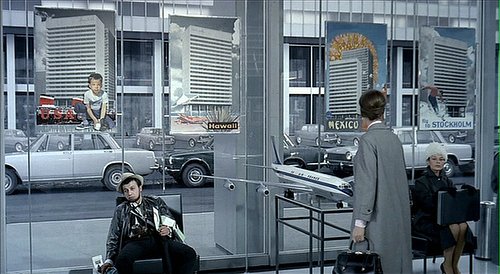
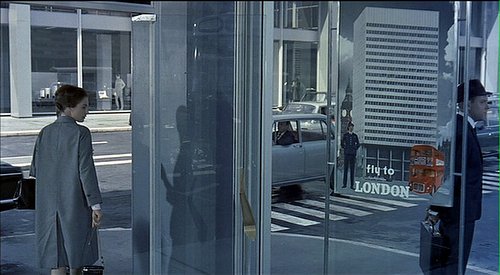
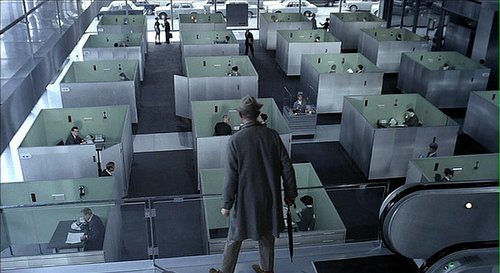
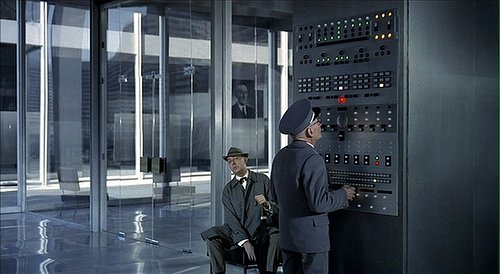
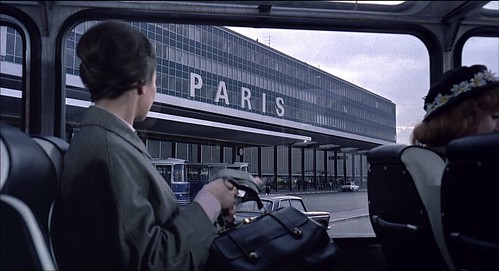
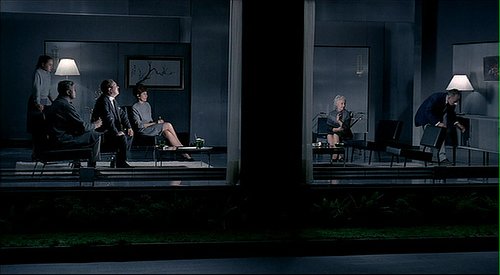

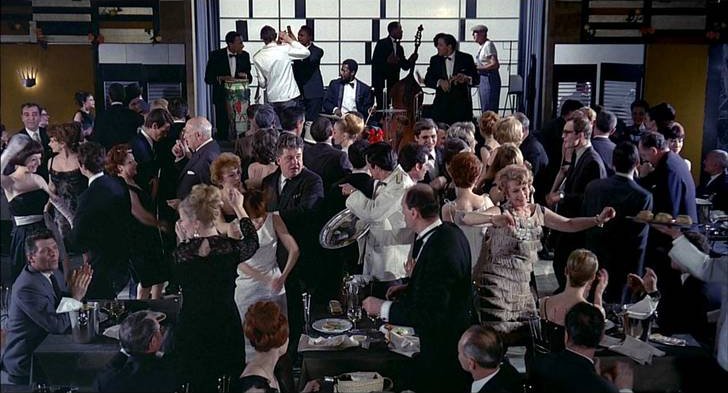



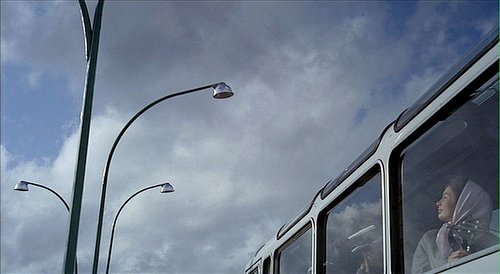
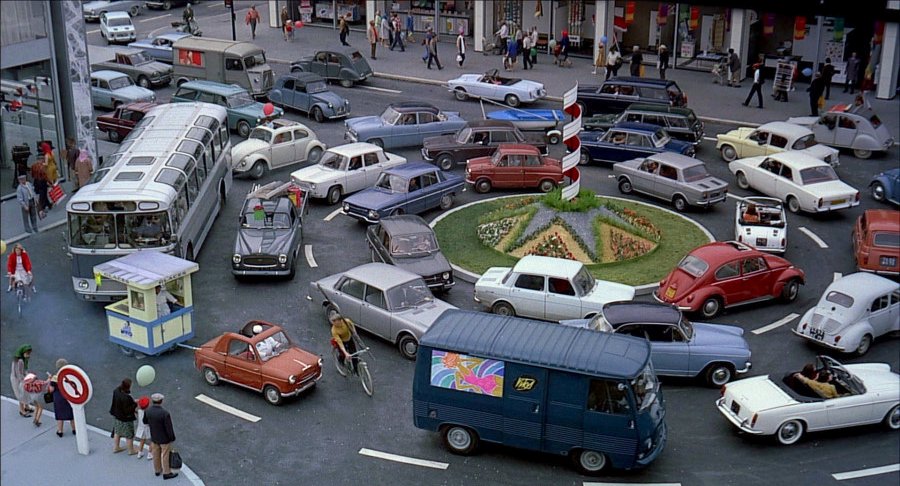
Comments (2)
Playtime is a masterpiece of modern cinema, and seeing this film on a big screen is a treat. There are so many subtle details, that film just gets better on the 2nd or 3rd viewing. The back-story behind Playtime is both fascinating and heart-breaking. Tati built his own city for the film, went way over schedule and budget, and when the film flopped, he ended up losing everything, including his house. The extra features on the Criterion DVD are essential viewing for Tati fans.
Unbelievable film… Great call.